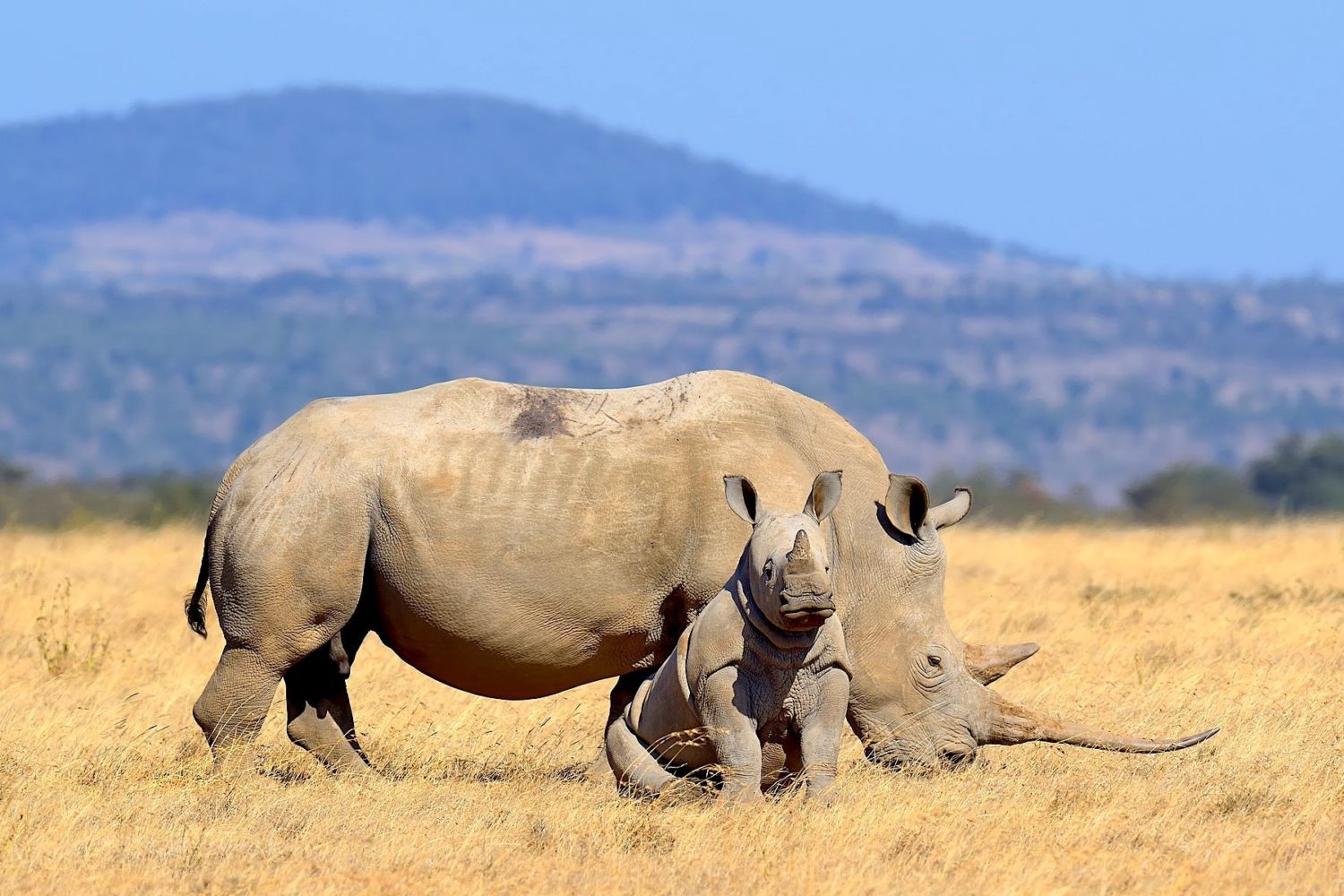The Iconic Differences Between the Black African Rhino and the White African Rhino.
Differences Between White and Black African Rhino. The African continent is home to a diverse array of wildlife, and among its most iconic inhabitants are the two species of rhinoceros—the Black African Rhino (Diceros bicornis) and the White African Rhino (Ceratotherium simum). Despite their similar-sounding names, these two species exhibit notable differences in their physical characteristics, behavior, and habitat preferences. In this article, we will delve into the distinct features that set these magnificent creatures apart.
Physical Characteristics:
Size and Weight: The most noticeable difference lies in their size. The White Rhino is larger than its Black counterpart. Adult White Rhinos can weigh anywhere from 1,800 to 2,300 kilograms, while Black Rhinos typically weigh between 800 and 1,400 kilograms.
White Rhinos are also longer and taller, with males reaching lengths of up to 4.2 meters and standing around 1.85 meters at the shoulder. In comparison, Black Rhinos are shorter and more compact, with males averaging about 3.4 meters in length and a shoulder height of approximately 1.5 meters.
Mouth Shape: One of the key distinguishing features is the shape of their mouths. The White Rhino has a wide, square-shaped mouth adapted for grazing on grasses. In contrast, the Black Rhino has a more pointed, hooked upper lip, which is adapted for grasping leaves and twigs from bushes and trees.
Behavioral Differences:
Feeding Habits: The differences in mouth shape correspond to variations in their feeding habits. White Rhinos are grazers, primarily feeding on grasses. They use their broad mouths to crop grass close to the ground. Black Rhinos, on the other hand, are browsers and feed on leaves and twigs. Their pointed lips allow them to pluck vegetation from bushes and trees.
Social Structure: Both species exhibit solitary behaviors, but White Rhinos are more social. White Rhino populations are known to form loose groupings, particularly females with their offspring. Black Rhinos are generally more solitary and territorial, with minimal social interaction except during mating.
Habitat Preferences: – Differences Between White and Black African Rhino
White Rhinos: Prefer open grasslands and savannas where they can easily spot predators and have access to the grass they graze on.
Black Rhinos: Adapt to a variety of habitats including grasslands, forests, and deserts. Their browsing habits make them more versatile in terms of habitat selection.
Conservation Status:
Both species have faced severe threats from poaching for their horns, which are highly valued in some cultures. The Black Rhino, however, has been more critically endangered, with populations declining significantly in the past. Conservation efforts have seen some success, with populations stabilizing, but challenges persist.
Remarks: – Differences Between White and Black African Rhino
While the Black African Rhino and the White African Rhino share a common ancestry, their evolutionary paths have led to distinct differences in physical characteristics, behavior, and habitat preferences; Understanding these iconic differences is crucial for conservation efforts aimed at protecting and preserving these magnificent creatures for generations to come. As we celebrate the rich biodiversity of the African continent, let us also strive to ensure the survival of these iconic rhinoceros species.








